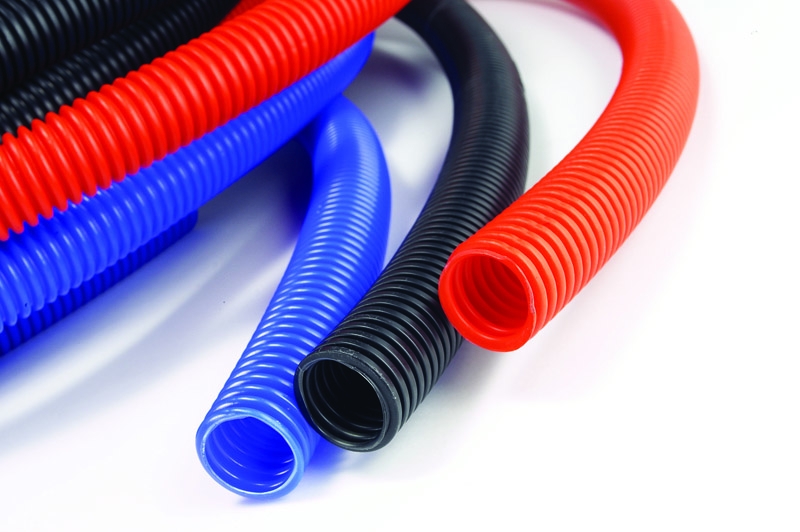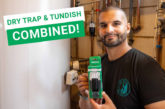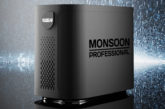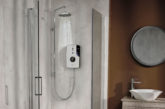
What is WRAS 2.7? And what are the best compliant plumbing solutions that not only save installers from getting in trouble with the authorities, but can also prevent homeowners from hassle? Toby Howard-Willis, Technical Engineer of JG Speedfit, explains.
“We must start by looking at the Water Regs!”
This phrase is probably never the starting point of a conversation between plumbers and homeowners. Nor is it the best line to go with when meeting potential building and construction partners, we’d bet. In all likelihood, our guess is that installers like to discuss juicier topics such as costs and plumbing solutions, as opposed to rules and regulations.
That said, for the conscientious installer, water regulations should not be ignored, as disregarding any water regulation can put you in hot water, if you’ll excuse the pun.
WaterSafe, the national accreditation body which checks and approves businesses and their plumbers, explains, contraventions against the regulations and byelaws is a criminal offence, and offenders may face prosecution. Those found guilty will have a criminal record, be fined and may have to pay costs.
However, even the most thorough installer might not know the regulations inside out. We all know that plumbers are strapped for time and finding a spare moment to read guidance around water regulation schedules can be difficult, especially when they are highly technical, as the guidance for WRAS 2.7 is. Thankfully, we’ve condensed this and can explain this regulation’s relevance quite quickly.
Water Regulation Schedule 2.7, simplified
In a nutshell, this regulation covers where and how you should run pipes in any building with a mains water supply. It does not apply to any closed-circuit system that is designed to be embedded in a solid floor, such as underfloor heating or a manifold system for radiators. The regulation is a practical one and is ultimately designed to aid installers, as well as protect homeowners from poor installation methods.
Most installers at some point are faced with the problem of a pipe leaking within a floor. This is not only difficult to diagnose, but also expensive for a homeowner whose only option is to dig up the entire floor to investigate, and then replace it. In such instances, adhering to Water Regulation Schedule 2.7 would help in two ways.
Firstly, there would be no inaccessible fittings within the concealed floor, as the regulation does not allow for it. Secondly, the entire length of pipe carrying the water would be within a conduit (a protective sleeve for the pipe), and therefore easily removable. This prevents the need to dig up the floor to identify the problem.
Highly flexible pipe in pipe solutions
Water Regulation Schedule 2.7 makes pipes and conduits a much higher consideration for installers. It’s not just about laying the pipe in the pipe sleeve; you must now consider the length of the pipe you’ll need to use, where it needs to extend to, how easy it is to remove from the conduit, and whether joints, if any, need to be made.
Without doubt, the best practice is to use flexible pipe solutions made from PEX or polybutylene, such as the JG Speedfit Layflat range of pipes and conduits. These pipes are flexible enough for you to easily pull and push through conduits, even if they bend round corners. The pipes are available in coil lengths of up to 50m in the two commonly used pipe sizes, 15 and 22mm. For maintenance and identification of pipes, conduits can be obtained in black, red or blue.
Installers may also wish to consider pipe in pipe solutions. The concept is simple – pre-sleeved pipes, ready to lay within concrete or masonry. With the pipe already pre-laid in the conduit, installers can save time by not having to push the pipe through the conduit during installation, which can creep up if you’re working on first-fix housing estates.
Fittings must be easily accessible
Another requirement of Water Regulation 2.7 is that any fittings laid in the floor must be easily accessible. The most obvious choice is to not actually use a fitting at all, if possible, as any joint represents a potential point where a leak could occur. Again, this is where flexible plastic pipes available in long lengths, come in handy.
If a fitting does have to be used, it should avoid coming into direct contact with the screed, as this can cause unwanted problems due to its chemical make-up. Copper soldered joints and pipes are the most susceptible to this type of problem, and ‘pin-holing’, small holes developed by corrosion, is a common problem.
To protect the fittings in screed, they should be contained in boxing units. If the fitting needs to be serviced later, a removable lid is used to access it thereafter.
To find out more visit www.speedfit.co.uk.













